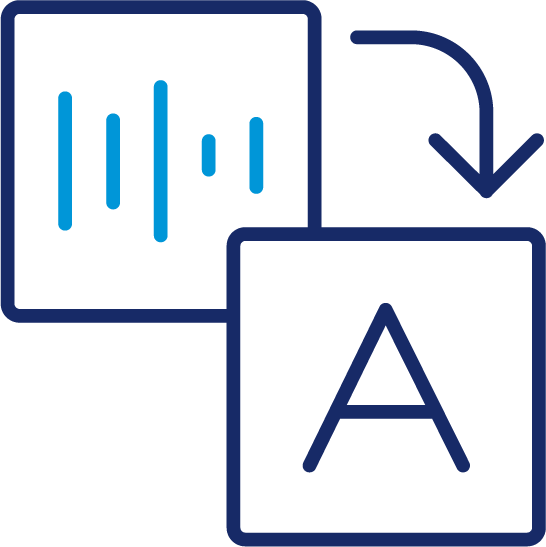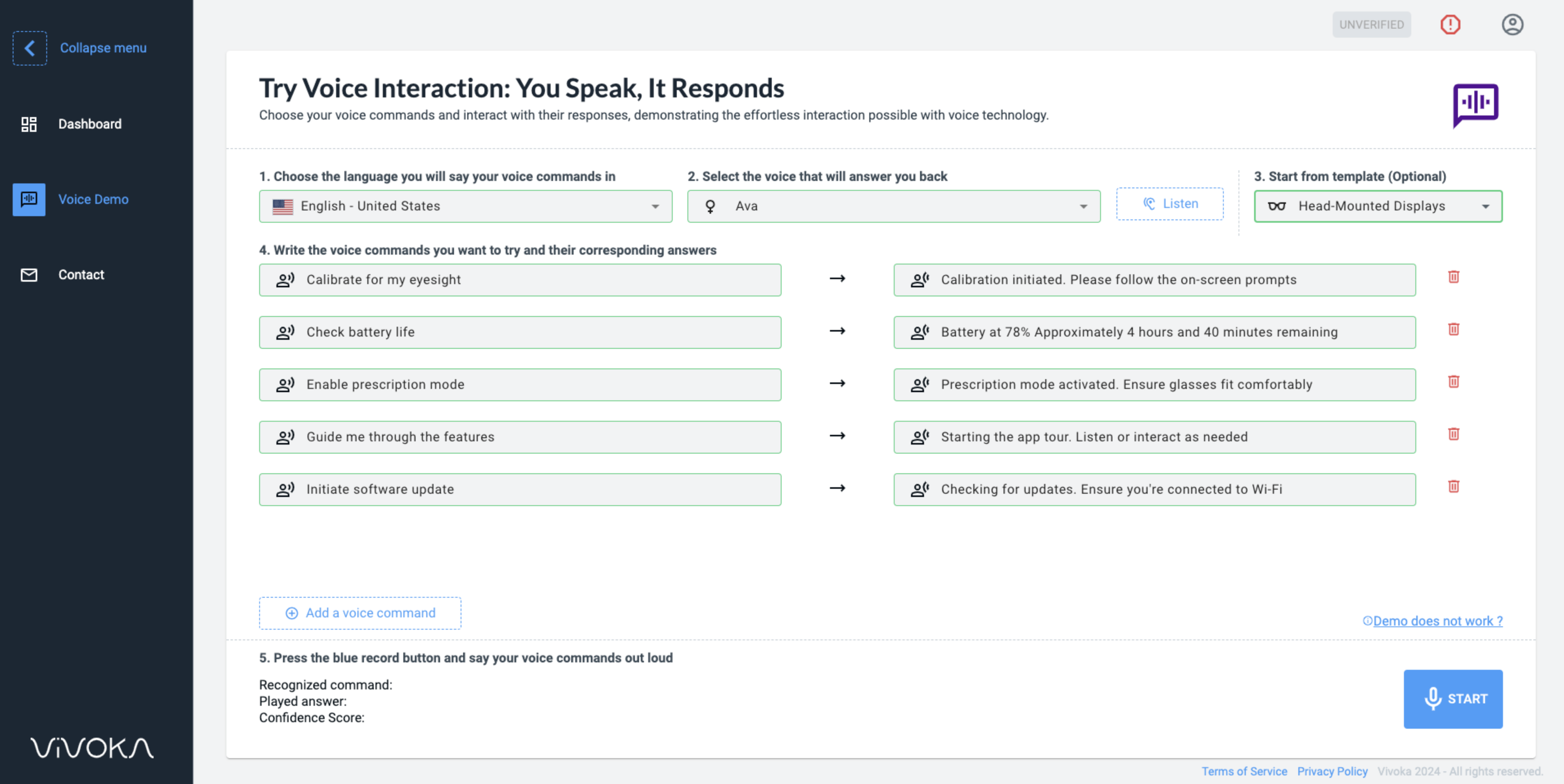Voice directed WMS (Warehouse Management Systems) are revolutionising warehouse operations, making them more efficient and accurate. This technology allows workers to receive instructions and communicate with the warehouse management system (WMS) through voice commands. It frees up their hands and improves productivity.
By leveraging the latest technologies, these solutions have enhanced warehouse efficiency and reduced costs.
What is Voice- Directed Technology?
Warehouse operations can be handled by Voice Directed Technologies that let workers interact with it simply by speaking to it or giving voice commands. This eliminates the needs of a paper based system and allows workers to have their hands free to perform tasks, improving productivity and efficiency. Vivoka provides Offline Automatic Speech Recognition Technology to understand and respond to worker commands. It makes it easier and faster for workers to complete the task and enhance communication between workers and the warehouse system. By providing precise, real-time guidance to help workers more quickly and accurately execute complex tasks, it streamlines and makes warehouse processes more efficient.
Speech recognition equals less training time for staff, as operators can easily learn commands that are already understood by the voice-directed solution.
How does voice directed technology work?
Voice directed technology uses a combination of hardware and software to enable workers to receive and respond to instructions using voice commands. Workers wear a headset with a microphone and speaker, which is connected to a mobile device or wearable computer.
The device runs software/app that communicates with the warehouse management system and translates voice commands into actions. Workers can use voice commands to receive instructions, confirm tasks, report completion, and request assistance. The system can also provide feedback to workers, such as confirming the correct item or location, or alerting them to potential safety hazards. This streamlines warehouse operations and improves worker efficiency and safety.
Types of Technology-assisted Warehouse Operations
There are several types of technology-assisted operations, each with its own unique benefits and applications which will improve business operations.
Voice Picking VS Pick-to-Light
How does PTV work?
With PTV, pickers wear headsets with microphones. A software system with a synthetic voice directs the picker to the pick location with information on what is to pick. Then, the picker communicates verbally back to the software system, citing the check digits that appear on a label at the pick location. The system then instructs the picker on the quantity to be picked and conveys any further instructions the picker needs to complete the task. Everything is done through voice and the pickers don’t even need to use their hands to confirm. In addition, they receive feedback which provides them with a chance to correct the pick if it is wrong.
How does PTL work?
With PTL (pick to light), light displays are typically installed in shelving units, case flow racks and storage racks at every fixed pick location. The display units light up, one at a time, to show pickers which order line to pick. Apart from identifying the pick location, the light unit also displays the quantity to be picked and where the product has to be placed into. The picker typically confirms the pick task by pushing a button on the light display. When no further lights are illuminated, the picker knows that the order is complete.
Which one should I choose?
Here and as always when considering implementing voice in your products or processes, it’s important to consider your environment. For example, due to its lower cost, PTV is more appropriate for large warehouses with high SKU volumes. Indeed, PTL modules are set up at the pick sites. So, distributing them widely is very expensive. Moreover, speech technology will give you more flexibility in your warehouse if you frequently reconfigure your pick positions.
PTL, on the other hand, works well for high-speed picking in warehouses with fewer SKUs or in crowded picking environments. Moreover, zoned picking processes benefit more from this option. The more pickers you have, the more economical it becomes . Still, you should keep in mind that PTL alone exposes you to a higher risk of errors compared to pick-to-voice, even if in both cases it is really low (0.2 to 2 errors per 1000 picks VS 3 to 5 errors per 1000 picks).
Problems in Voice Directed Warehouse Operations
Voice-directed warehouse operations can be a game-changer for many businesses, but they also come with their own set of challenges. From technical issues to communication breakdowns, we will explore the most common problems voice-directed warehouse operations face.
- Poor Voice Recognition Accuracy:
One of the biggest challenges in voice-directed warehouse operations is poor voice recognition accuracy. There are different factors that can cause this:
- background noise related to the environment,
- accents
- or the specific way each person expresses themself (speech patterns).
Speech technologies can help improve it, such as AFE to limit the “noise”, or NLU in order to add context and simplify the understanding of voice commands by the system. Moreover, regularly updating and calibrating speech recognition software can help improve accuracy over time.
- Limited Flexibility and Scalability:
Other problems in voice-directed warehouse operations include limited flexibility and scalability. Indeed, traditional voice systems require significant time and resources to set up and customise, of which developers and a lot of data… It is making it difficult to adapt to changing business needs or scale up operations.
A dedicated tool designed to make it easier can help streamline the building, implementing and onboarding process.
Benefits of Vivoka’s Voice Command Solution in Warehousing
Voice-directed solutions offer numerous advantages in warehouse operations. Indeed, by implementing voice commands, several benefits can be achieved:
- Improved accuracy: With voice-directed technology, workers can complete tasks with fewer errors, leading to increased precision and operational efficiency.
- Reduced training time: Voice commands minimize the need for extensive training, as workers can quickly learn how to use the system through spoken instructions, resulting in reduced onboarding time.
- Increased safety and productivity: Voice-directed operations enhance safety in the warehouse by allowing workers to keep their eyes and hands free while performing tasks. This not only improves safety but also boosts productivity by enabling workers to focus on their tasks without distractions.
- Automation and real-time information: Automating the Warehouse Management System (WMS) with voice technology allows support activities to receive real-time updates and enables swift execution of tasks such as production scheduling and order restocking.
- Simplified product information: Voice-enabled solutions simplify the process of accessing and merging product information, making it easier for workers to find items and access relevant documentation in real-time.
Furthermore, our on-device processing approach at Vivoka provides embedded voice technologies, offering the following advantages:
- Work in remote locations without internet connectivity: Our solutions operate perfectly even in areas without internet access, ensuring uninterrupted functionality.
- Data protection: By avoiding reliance on cloud servers, corporate data remains secure and protected.
- Zero service latency: With on-device processing, service latency is reduced to zero, ensuring real-time responsiveness and seamless user experiences.
In addition, our ASR technology is highly accurate across more than 40 languages. With the help of the NLU technology, It understands dialects, vocabularies, and accents, enabling efficient communication and interaction. To address environmental noise challenges, our Audio Front-End feature evaluates voice signal quality and suggests filters to enhance recording quality.
Successful implementation of Voice-Directed Technology
Many companies have already successfully implemented voice-directed technology in their warehousing operations. Moreover, several integrators are providing voice in their WMS solutions. For instance, KFI has implemented our ASR (Automatic Speech Recognition) technology and offers Vocalize. Vocalize is a supply chain solution that enables voice functionality in WMS across Europe. They have already provided this solution to numerous organisations involved in production, logistics, and distribution.
Here are the key details regarding the implementation:
- Technologies utilized: Our rule-based ASR technology is employed through the Android SDK, enabling streamlined voice commands in multiple languages on compatible devices.
- Project implementation: A grammar was developed within the VDK Studio to capture and process various voice commands and patterns.
- Benefits: The implemented solution offers multilingual voice commands that are resistant to noise, ensuring quick and easy integration. It is compatible with any Android-based mobile communication device.
Final thoughts
Apart from our customers, DHL Supply Chain saw a 25% increase in productivity after implementing voice-directed technology in their warehouses. Another company, Coca-Cola, saw a 99.9% accuracy rate in their order picking process after implementing the technology. Other companies that have successfully implemented voice-directed technology include Walmart, Amazon, and FedEx.
As the benefits of this technology become more widely recognized, it is likely that more companies will adopt it in the future. Some of the voice technologies such as Voice Biometrics is estimated to grow at a CAGR of 18.5% from 2022 to 2028 in the Middle East and Africa region (US$ 114.06 million in 2022 to US$ 316.25 million by 2028).
Voice technologies are quickly becoming the future of Warehousing operations. As our voice technologies are continuing to evolve and can be easily adopted in warehouse operations, we are sure to see even more development in our use cases and integrations.



















